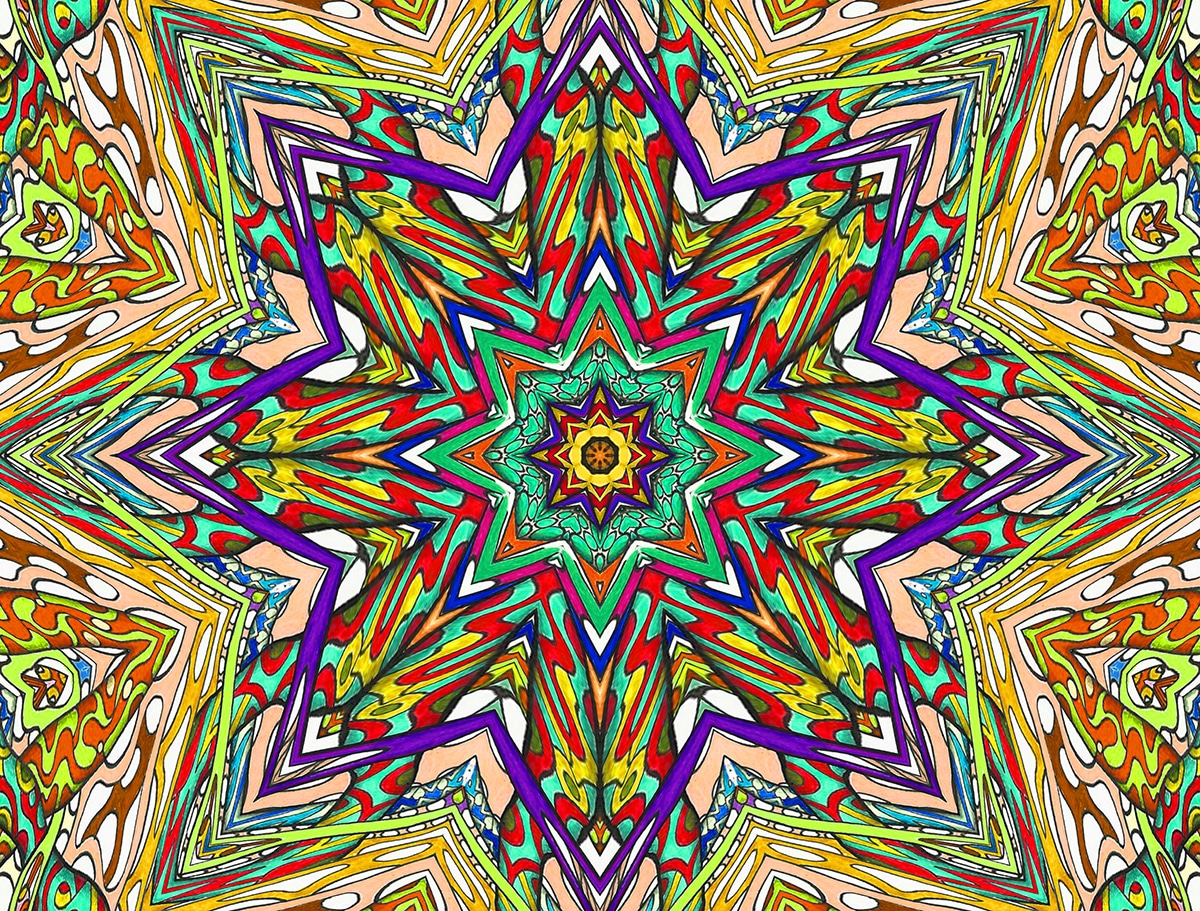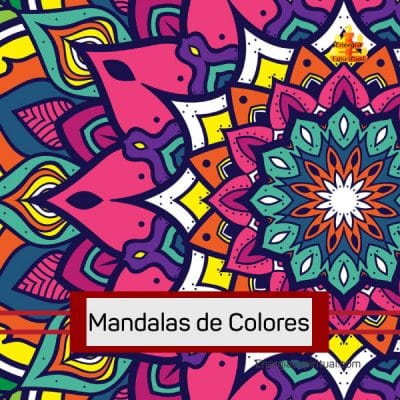
We have all colored some special drawings, called mandalas, at one time or another. It could be very fun and entertaining to paint them in different colors and finally achieve a show of various shades. But what is a mandala really? What is?
These peculiar drawings were not created for the enjoyment and distraction of the little ones. In fact, they are a frequently used tool in psychology, especially when dealing with children, but that was not their original purpose. To clarify this concept a little, we are going to explain it in this article. what is a mandala and how is it used in psychology.
What is a mandala and what is it for?

The word "mandala" is of Sanskrit origin, which is a classical language from India, and translates as "perfect circle." These drawings are spiritual, ritual and symbolic representationss that are used above all in Hinduism and in the Budismo. Mandalas are generally made up of a set of geometric shapes and concentric figures that represent the contents and the most outstanding characteristics of the universe. The main objective of these curious drawings is fulfilled during meditation, in which they encourage the concentration of energy in a single point.
At the structural level, the concentration support and the center of the Universe would be the sacred space. It is usually represented as a circle inscribed inside a quadrangular structure. It should be noted that, on a practical level, Hindu yantras tend to be more linear, while Buddhist mandalas tend to be considerably more figurative. Starting from the cardinal axes, the regions or internal parts of the circle are usually sectorized.
It should be noted that other cultures, outside the Hindus and Buddhists, also have certain mandaloid or mandalic configurations.. The vast majority of times they usually have a spiritual connotation. These would be some examples among many:
- The mandorla, originally from medieval Christian art.
- Some labyrinths that we can find on the pavement of various Gothic churches.
- The chacanas, from the Andean world.
- The stained glass rose windows, also located in churches.
- Diagrams of Pueblo Indian culture.
It is not surprising that the mandala figures possess this universality. Its concentric shapes suggest an equidistance idea in relation to a center, giving a feeling of perfection. In addition, the perimeter of the circle is an ideal way to represent the eternal natural return, that is, the cycles of Nature.
What are mandalas in psychology?

As with all artistic representations, mandalas also allow you to uncover personal searches and needs and channel different emotions. Painting these peculiar drawings reduces anxiety and stress levels, since our mind connects with our interior during the process, thus favoring creativity. So it could be said that it is a channel for feelings and emotions, especially those that we are not able to label or shape.
This method is mostly applied when dealing with children. More and more educational centers are incorporating the making of mandalas into their school routine. The benefits they have on the little ones are impressive and fast. The main advantages of mandalas in children are as follows:
- They help the development of fine motor skills in both hands and fingers.
- They promote concentration and attention.
- They favor the well-being of children, since they focus on something pleasant, such as painting.
- They promote imagination and creativity.
- They reduce anxiety and stress levels.
- They help increase children's self-esteem, since they create something unique and their own.
- They encourage the development of perseverance, patience and perseverance.
- They enhance your aesthetic sense.
- They promote the teaching of new vocabulary related to shapes, sizes, colors or emotions.
- They make it possible to work on various geometric concepts: circles, squares, triangles, stars, etc.
The meaning of colors
Mandalas not only help children, but also adults. Many of the advantages can also be applied to the elderly. One way to express our innermost self and our state of mind is through the selection of colors. Let's see what the mandalas mean according to the color they have:

- Red: It represents very intense emotions, especially love and anger. It helps to attract or repel what we want.
- Orange: It is usually the most suitable for people who want to exceed their confidence levels. It transmits the best of us and helps to carry out new activities, outside of our comfort zone.
- Yellow: It symbolizes fury and pure energy. Helps transform negative energies into positive ones. It is also useful for controlling and directing sad and revengeful feelings and ego feelings.
- Green: It represents the balance in our lives, especially our interior in relation to the exterior. It helps free us from our own chains, those that we impose on ourselves out of shame or fear.
- Violet: It symbolizes the connection of the individual, both with his own interior and with the universe. It helps to expand their tastes and their skills.
- Rose: It transmits subtlety, love, charm and friendship. Helps sentimental growth and development to achieve a better balance between internal feelings. Thus, it promotes self-love and inner peace.
- White: Being a color that conveys purity, white symbolizes peace and harmony. It helps to obtain a purer soul, cleaning the scrambled energies of the person in question.
- Black: Instead, the black color symbolizes pessimistic energies. It attracts bad vibes in order to transform them so that they are beneficial for the individual.
- Gray: Gray is the most neutral color in mandalas. It is a connection between good and bad. It conveys commitment and seriousness and represents stability, balance and trust.
I hope that it has already become clear to you what a mandala is and what it is used for in its various fields. Of course it is not a bad idea to paint and color from time to time some! Remember that adults can also benefit from these curious drawings.